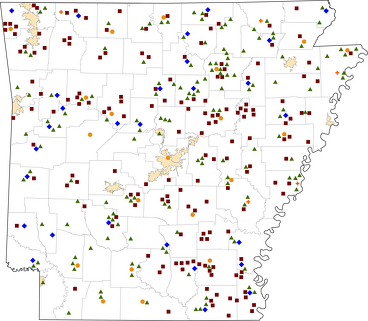Arkansas
State Office of Rural Health
Phone: 501.280.4529
Email: orhpc@arkansas.gov
view details
Arkansas Nonmetro Population
3,032,651
Estimated population
1,189,315
(39.2%)
People living in nonmetro areas
Arkansas Rural Healthcare Facilities
28
Critical Access Hospitals
5
Rural Emergency Hospitals
149
Rural Health Clinics
163
Federally Qualified Health Centers*
20
Short Term/PPS Hospitals*
*Sites according to data.HRSA.gov (July 2025), showing only locations outside of
U.S. Census
Bureau Urban Areas with a population of 50,000 or more
Last Updated: 9/11/2025
Last Reviewed: 2/23/2024



Selected Social Determinants of Health for Rural Arkansas